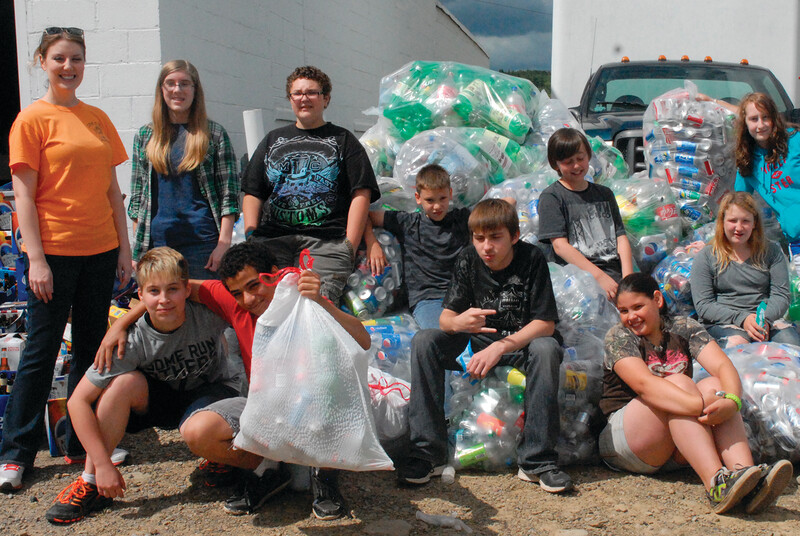Well into the 21st century, educators, politicians, and industry leaders are still debating the exact meaning of "21st century skills." Although most of us believe today's learners should be able to apply what they have learned in authentic contexts, such contexts are rapidly changing, reflecting a "flat" world with few trade barriers and an expanding global economy (Friedman, 2005). Constant technological advancements provide innovative opportunities for connecting people and sharing information at record speed beyond geographic boundaries.
The International Society for Technology in Education (ISTE) explains that students should "use digital media and environments to communicate and work collaboratively" and "develop cultural understanding and global awareness by engaging with learners of other cultures" (ISTE, 2007). The Common Core State Standards also emphasize the importance of preparing all students for success in our global economy and society. Similarly, the Partnership for 21st Century Learning (2014) argues that students need academic proficiency, as well as an ability to solve problems, think critically, communicate, create, collaborate, and innovate. Further, to gain "21st century citizenship," students must develop global competencies and international understanding (p. 1).
The Organisation for Economic Co-operation and Development recently proposed adding an assessment of global competence to the 2018 Program for International Student Assessment (PISA) as a critical step in defining what it takes to be globally competent. This proposed assessment would offer the first substantive overview of education systems' progress in preparing graduates whose opportunities for success will depend on their ability to compete and collaborate on a global scale.
At least in theory, we already have many of these curricular expectations and standards in place. In reality, however, our schools do not emphasize international knowledge and skills. Compared to their peers in other countries, U.S. students lack awareness of world cultures, global languages, and foreign affairs (Stewart, 2010). There is also a widespread misconception that teachers are already skilled in preparing 21st century learners and would readily do so if not bound by restrictive academic standards and accountability measures. In truth, many teachers are unprepared or unwilling to teach 21st century skills, deeming them less important than current core subjects, especially with little or no instructional time to spare (Prensky, 2014; Rotherham & Willingham, 2009).
So how do teachers prepare students for global citizenship and 21st century skills without "adding on" a whole new curriculum? Here are some suggestions and resources for building global learning communities, engaging students in global language learning, building intercultural awareness through global literature, and exploring the world through virtual travel. These ideas can be integrated into busy school days and current content areas using common technologies and instructional resources.
Create Global Learning Communities
Connecting classrooms around the world is an effective way to explore diverse cultures and communicate with people beyond classroom walls. Recently, I worked with a group of 6th graders in rural Kansas who engaged in online literacy circles with students in Dublin, Ireland. The students read books, prepared discussion prompts, and responded to the literary works using Kidblog and Skype as primary modes of communication. Not surprisingly, students were highly motivated to read, knowing that they would discuss the text with members of a global learning community. Both groups of students gained a deeper understanding and diverse perspectives about the books (Larson & Dwyer, 2015). In addition—and perhaps more important—they shared much about their school experiences ("Irish students have a shorter school day!"), language ("Cool, Irish kids learn both English and Irish"), weather ("Yes, there really are tornadoes in Kansas"), and a myriad of other issues. While acknowledging cultural differences, the students tended to focus on commonalities as they shared similar views on education, social media, popular culture, and future goals. These 6th graders independently exchanged blog posts with their Irish peers, but primary students can enjoy a similar experience by participating in a shared blogging experience under teacher guidance.
Launching a similar project is easy. For example, classroom teachers can involve their students in online literature circles through the Global Read Aloud. Pernille Ripp, a 7th grade teacher in Wisconsin, began the project in 2010 with one simple goal in mind: "One book to connect the world." Since its inception, more than 1 million students in more than 60 countries have participated. Each year, Ripp carefully selects books to meet the needs of diverse age groups and interests. Teachers and student use whatever technology is available (Skype, Twitter, and Edmodo, for instance) to connect with classes around the world about the book they're reading. In addition, classes participate in conversations with authors of the chosen books through Google Hangouts and YouTube videos. Collaborative partnerships can develop around any subject and can range in complexity from simple information gathering (students asking for expertise from others) to true partnerships (students solving problems together). Fortunately, there are many resources for this kind of work.
For example, the International Education and Resource Network is a nonprofit organization made up of more than 30,000 schools and youth organizations in more than 140 countries. Some 2 million students around the globe use the platform on a daily basis to participate in collaborative projects. The organization's motto, "Learn with the world, not just about it," coupled with the mandatory question all participants must answer, "How will this project improve the quality of life on the planet?" provide the vision to inspire global citizens to make a difference by working with their global peers. Jeff Wang (2016), director of China Learning Initiatives at Asia Society, noted that more than one-fifth of the world's population speaks Chinese as their native language, and that Chinese Internet users outnumber those in the U.S., India, and Japan combined. Yet, many Americans expect English to reign as the dominant world language. Most European countries require students to study at least one, often two, foreign languages; in contrast, the United States does not currently have a nationwide language mandate (Devlin, 2015). This is unfortunate, as language learning supports interaction in linguistically diverse communities both globally and at home.
Ensuring that students learn a foreign language will afford them advanced career opportunities while fostering tolerance and global awareness. Learning a new language can be difficult, but with consistent exposure and practice, teachers can help cultivate language skills. All schools, even those without formal language programs, can benefit from exposing students to global languages through children's books and technology tools.
For instance, the International Children's Digital Library gives teachers, librarians, and students free access to web-based children's books in more than 50 languages. Marilyn Stoop, a 4th grade teacher of a linguistically diverse class in Texas, uses the library. Her students explore titles (some available in multiple languages) and read independently on iPads or laptops. She also projects books on a large screen. Students whose first language is not English often read books aloud in their native language to their peers. Marilyn explains, "My English language learners take great pride in sharing books in their own language, and that helps my other students gain acceptance and appreciation for diversity." Libraries like these provide invaluable opportunities for immersing students in culturally and linguistically diverse content both at school and at home. Downloadable e-books can also be helpful in language learning. Many Kindle books, for example, offer translation tools including audio narration or dictionary support.
In addition, there are many apps to help foster global language learning. For example, Gus on the Go is available in 28 different languages. Gus, an animated owl, encourages students to explore languages through interactive vocabulary lessons. Learn Arabic for Kids and Learn Japanese for Kids both feature hundreds of flash cards that are professionally recorded by native speakers. For older students, Duolingo is a free, game-based, language-learning website featuring close to 20 different languages. Students can take a simple reading, writing, and listening test to determine their level of language proficiency. Interactive questions engage students in lessons and reinforce concepts in various ways, like typing a spoken phrase or identifying words from photos. Users get instant feedback and earn points as they go. Language apps range in price and quality. Teachers should select those that feature native speakers, represent diverse people and content without bias, engage students through interactive content, and are easy to navigate.
Read Global Literature
Educators are well aware that integrating children's or young adult literature across the curriculum can support content learning and facilitate discussions about social and ethical issues, human behaviors, and controversial topics. Both multicultural literature and global literature can foster empathy and tolerance while addressing issues of oppression and prejudice; most multicultural literature exemplifies diverse cultural groups within America, whereas global literature focuses on people and contexts outside of the United States (Lehman, Freeman, & Scharer, 2010). Global literature generally refers to books that are international either in topic, or origin of publication, or author. These books are often translated from the original language.
Global literature has the potential to support students' international understandings and their ability to make sense of the world. In the United States, only about 5 percent of children's literature is published internationally, compared with many other countries where 20 to 35 percent of children's books originate outside their borders (Yokota & Teale, 2016). Hence, it is vital that U.S. teachers integrate global literature into core subjects, literature circles, read-alouds, and classroom and school libraries.
Locating global literature takes conscious effort, but there are several resources that can help. The International Board on Books for Young People is a non-profit organization that has a mission of promoting "international understanding through children's books." The United States Board on Books for Young People serves as its U.S. section. Both organizations include information about award-winning international books and related activities on their respective websites. Explore Global Travel Virtually
With today's technology, even students who don't have opportunities to travel or study abroad can experience authentic contexts around the world through virtual travel. Creative teachers find ways to expand student learning beyond classroom walls.
Renita Durand, a high school French teacher, plans a virtual field trip to Paris each year. "I want my students to experience the sounds, smells, art, food, and language of Paris," she explains. Though her students don't actually visit Paris, they enjoy the view from the Eiffel Tower, stroll the city streets using Google Earth, and explore the Louvre. Virtual travel can foster global awareness across all content areas. For instance, National Geographic Education offers countless opportunities for integrating virtual travel into science, social studies, and language arts as students visit refugee camps, explore regions, discover natural resources, and experience the impact of global warming. Around the Globe with PBS LearningMedia provides similar experiences. Many museums offer online panoramic tours of their exhibits. For example, The Smithsonian National Museum of Natural History invites students to engage in virtual, self-guided, and room-by-room tours of certain exhibits. Online users can also access collection areas, research stations, and even past exhibits. Google Arts & Culture features content from more than 1,000 leading museums and archives, bringing the world's treasures online. Here, students can visit cities like Vienna, Buenos Aires, Beirut, and Mexico City to explore local art collections and exhibits. Going Global
Clearly, the world that today's learners will graduate into is different from the one in which we grew up. As never before, schools must prepare students to collaborate and compete on a global scale. With clear expectations of producing globally competent students in place, teachers face the tremendous challenge of turning ideals into reality.
The instructional suggestions in this article represent just a few of the activities that teachers can use to engage students in global conversations and projects. Rather than viewing these activities as prescriptive and complete, think of them as springboards for bringing the world to your classroom. Be creative, innovative, and curious. Challenge yourself and your students to go global.
Additional Resources
Global
Learning
Communities
ePals is a web-based platform where teachers can form partnerships with other classrooms. Voices of Youth is UNICEF's community of youth bloggers from around the globe. Global
Language
Learning
WatchKnowLearn features a collection of YouTube videos that can help students learn a wide range of global languages. Global Literature
The Mildred L. Batchelder Award is given to the most outstanding children's book originally published in a language other than English in a country other than the United States, and subsequently translated into English for publication in the United States. Global Exploration & Travel








